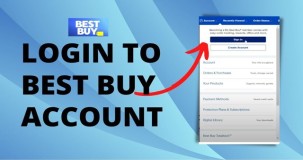 Best Credit Cards
Best Credit Cards
 Credit Report
Credit Report
 Credit Report
Credit Report
 Insurance
Insurance
 IT Services
IT Services
 Car Insurance
Car Insurance
 Best Credit Cards
Best Credit Cards
 Car Insurance
Car Insurance
 Credit Report
Credit Report
How do I link an email to dynamics? Learn how to link your email to Dynamics with this step-by-step guide. Integrate your email account seamlessly and efficiently to improve your workflow and productivity. Stay connected and manage your emails effortlessly within Dynamics.

Why Link Email to Dynamics?
Before diving into the steps of linking an email to Dynamics, it's important to understand the benefits this integration offers. By linking your emails to Dynamics, you can:
Now that you understand the advantages, let's go over the steps to link an email to Dynamics:
Tips for Successful Email Linking:
While the process of linking emails to Dynamics is relatively straightforward, there are a few best practices to keep in mind:
Linking emails to Dynamics offers numerous benefits, including centralized communication, improved collaboration, and enhanced efficiency. By following the steps outlined above and implementing best practices, you can seamlessly integrate your email communication with Dynamics, providing a comprehensive view of your customer interactions.
A: To link an email to Dynamics, you can follow these steps:
1. Open your email application.
2. Select the email you want to link to Dynamics.
3. Look for the Dynamics 365/CRM sidebar or toolbar in your email application.
4. Click on the "Link to Dynamics" or similar button.
5. A pop-up window will appear, allowing you to select the Dynamics record you want to link the email to.
6. Choose the appropriate record from the list and click on the "Link" button.
7. The email will now be linked to the selected Dynamics record.
A: Yes, you can link multiple emails to Dynamics at once. Here's how:
1. Open your email application.
2. Hold down the Ctrl key (or Command key for Mac) and select the emails you want to link to Dynamics.
3. Look for the Dynamics 365/CRM sidebar or toolbar in your email application.
4. Click on the "Link to Dynamics" or similar button.
5. A pop-up window will appear, allowing you to select the Dynamics record you want to link the emails to.
6. Choose the appropriate record from the list and click on the "Link" button.
7. The selected emails will now be linked to the chosen Dynamics record in bulk.
A: Yes, you can unlink an email from Dynamics. Here's how: 1. Open the Dynamics application. 2. Navigate to the record where the email is currently linked. 3. Find the Activities or Emails section on the record page. 4. Locate the email you want to unlink. 5. Click on the delete or unlink icon next to the email. 6. Confirm the action if prompted. 7. The email will now be unlinked from the Dynamics record.
Q: How can I search for emails linked to Dynamics?A: To search for emails linked to Dynamics, you can use the following steps:
1. Open the Dynamics application.
2. Navigate to the entity or record where you suspect the email is linked.
3. Look for the Activities or Emails section on the record page.
4. Use the search or filter functionality provided to search for specific emails.
5. Enter relevant keywords, subject, sender, or any other criteria to narrow down the search.
6. Click on the search or filter button.
7. The system will display the emails that match your search criteria.
A: Yes, it is possible to automatically link emails to Dynamics. This can be achieved through email synchronization or integration tools available for Dynamics 365/CRM. By configuring these tools and giving necessary permissions, you can set up automatic email linking based on certain criteria such as sender email address, subject keywords, or specific record types. This automation saves time and ensures that relevant emails are always associated with the appropriate Dynamics records.
 LATEST ARTICLES
LATEST ARTICLES

Do rental cars come with liability insurance Texas?

Do you get cheaper insurance if you call?

Do most people in Florida have flood insurance?

Is it better to own an Allstate or State Farm?

Is it better to have 80% or 100% coinsurance?

Is home insurance the same as property insurance?

How do I link an email to dynamics?

Is Medicare more expensive than Obamacare?

Is HSA or FSA use it or lose it?

Does credit one bank report to Equifax?

Does disputing a collection restart the clock?

Does closing a secured credit card hurt your score?

How do I pay my Best Buy account?

How do I lower my APR rate?

How do I make a balance transfer offer?

What are the challenges of being an insurance agent?

What are the pros and cons of paying off a loan quicker?

What are the 5 key challenges facing the insurance industry?
 POPULAR ARTICLES
POPULAR ARTICLES

Do rental cars come with liability insurance Texas?

Do you get cheaper insurance if you call?

Do most people in Florida have flood insurance?

Is it better to own an Allstate or State Farm?

Is it better to have 80% or 100% coinsurance?

Is home insurance the same as property insurance?

How do I link an email to dynamics?

Is Medicare more expensive than Obamacare?

Is HSA or FSA use it or lose it?

Does credit one bank report to Equifax?